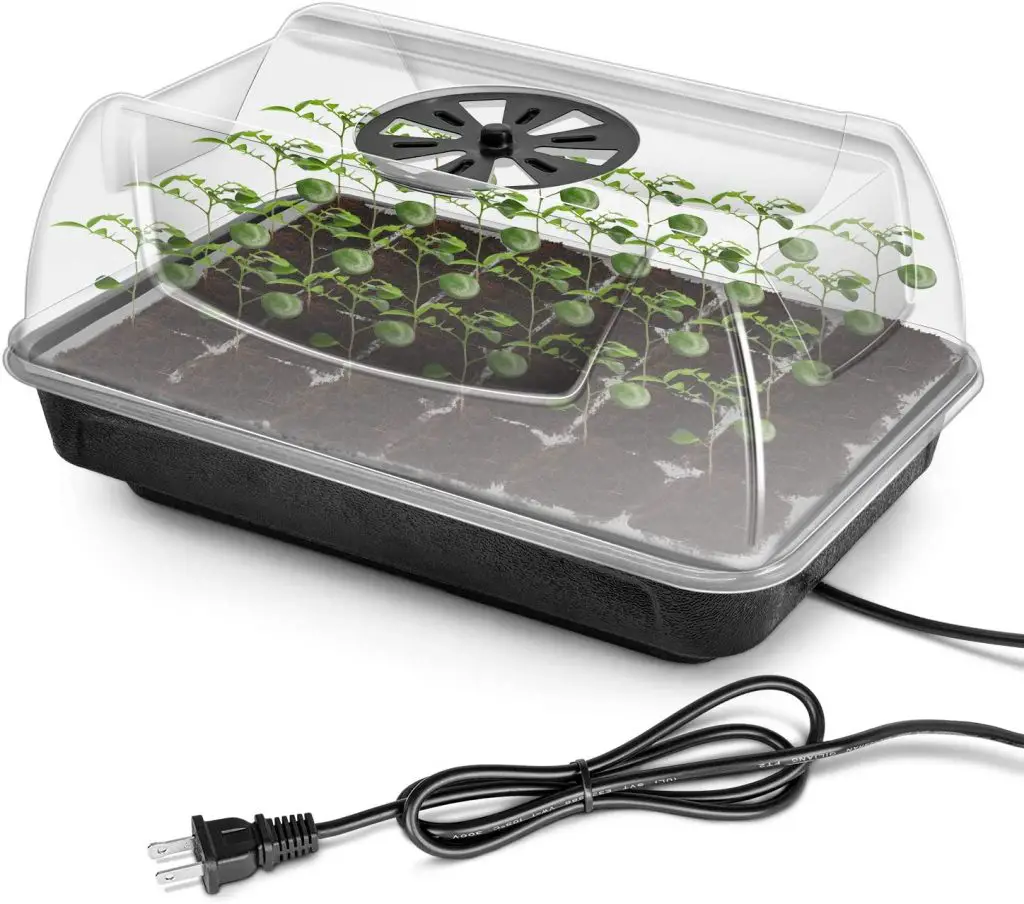Do Tomato Seeds Need Light To Germinate? Tomato plants are pretty much the most popular vegetable to grow in your vegetable garden and most people start off growing tomato seedlings purchased from the local Garden Centre. However, if you are growing them from seed for the first time one of the most common questions that is asked is do tomato seeds need light to germinate?
Tomato seeds do not need light to germinate they will germinate in the dark and as a result of this are usually planted in the soil rather than on top of it. However, the seedlings will quickly die off if they are not given light once they appear above the soil. The reason for this is that the seed contains only enough energy to get the plant going and it will not continue to grow unless it receives light.
The other key ingredients to ensure that tomato plants germinate is they need a little bit of moisture and they need temperatures above 50°F (10°C). At temperatures below this, the seeds will not germinate at all, however, between 50 and 68°F (10 to 20°C) the germination rate will be extremely slow.
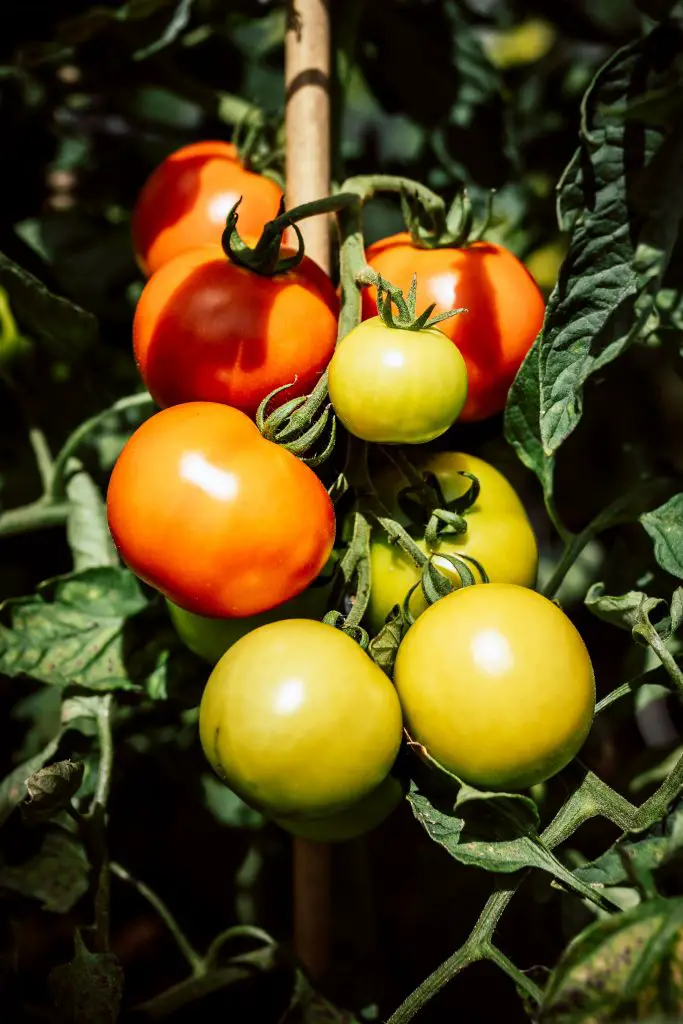
When To Plant Tomato Seeds
Tomato seeds should ideally be planted in early spring around 4 to 6 weeks prior to the last frost. The reason for this is that tomatoes typically take anywhere between 80 to 120 days to produce their first fruit. Generally, the first harvest is relatively small until a little later in the season. As a result of this to make the most of the growing season it is important to plant seedlings as early as possible.
How To Grow Tomato Plants
Tomato plants are a frost-sensitive plant that thrives in warm conditions, as a result of this most gardeners start tomato seeds in seed trays though they will grow in the open garden once the weather is warm enough.
To start the seeds off start by filling a seed tray with a good quality seed raising mix ensuring that it is firmed down into the individual cells to create solid plugs. Doing this will make it easier for the plants to be transplanted into the garden with minimal disturbance to the roots later on.
Ideally, you should aim to put 2 to 3 seeds in each cell at a depth of approximately a quarter of an inch. This will ensure that at least one seed comes up per cell, however, if all the seedlings germinate it is advisable to remove the weakest ones leaving just one plant per cell.
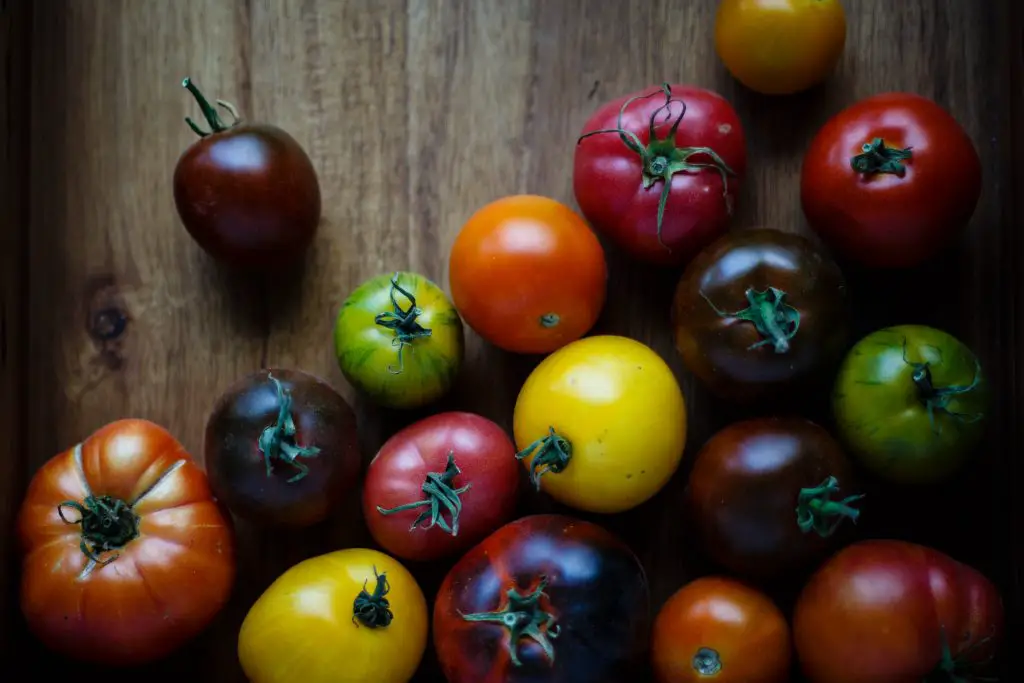
Once the seeds have been planted up it is important to place them in a warm location that has plenty of sunlight to ensure that the seedlings grow strongly. However, if you live in a relatively cold location it may be worth considering using a heated propagation tray because it produces consistent heat which will ensure that the seedlings develop faster.
If you are considering purchasing a heated propagation tray we would recommend that you purchased one that has a removable seed tray and humidity dome. The removable seat tray is advantageous because it is usually the section of the unit that deteriorates first so being able to replace it will extend the life of the unit.
The humidity dome is also very important in maintaining a consistently humid environment around the seedlings and will make a substantial difference to the growth of the plants. To see the latest price on Amazon for this type of item click on the link below.
The seedlings will typically need to spend approximately 6 weeks in the seed trays before they can be planted out into the garden which can only occur after any risk of frost has passed.
Planting Seedlings Out Into The Garden
Tomato seedlings ideally should not be planted out in the garden until temperatures are typically greater than 59°F (15°C) and obviously warmer is better. However, if you live in an area where the weather is somewhat unreliable and you may consider providing additional protection when the plants go out into the garden.
Initially, cloches may be used when the plants were relatively small, however, once they increase in size a little bit you will need to use a row cover. If you are considering purchasing one check out an example of a suitable one below. To see the latest price on Amazon click on the link.
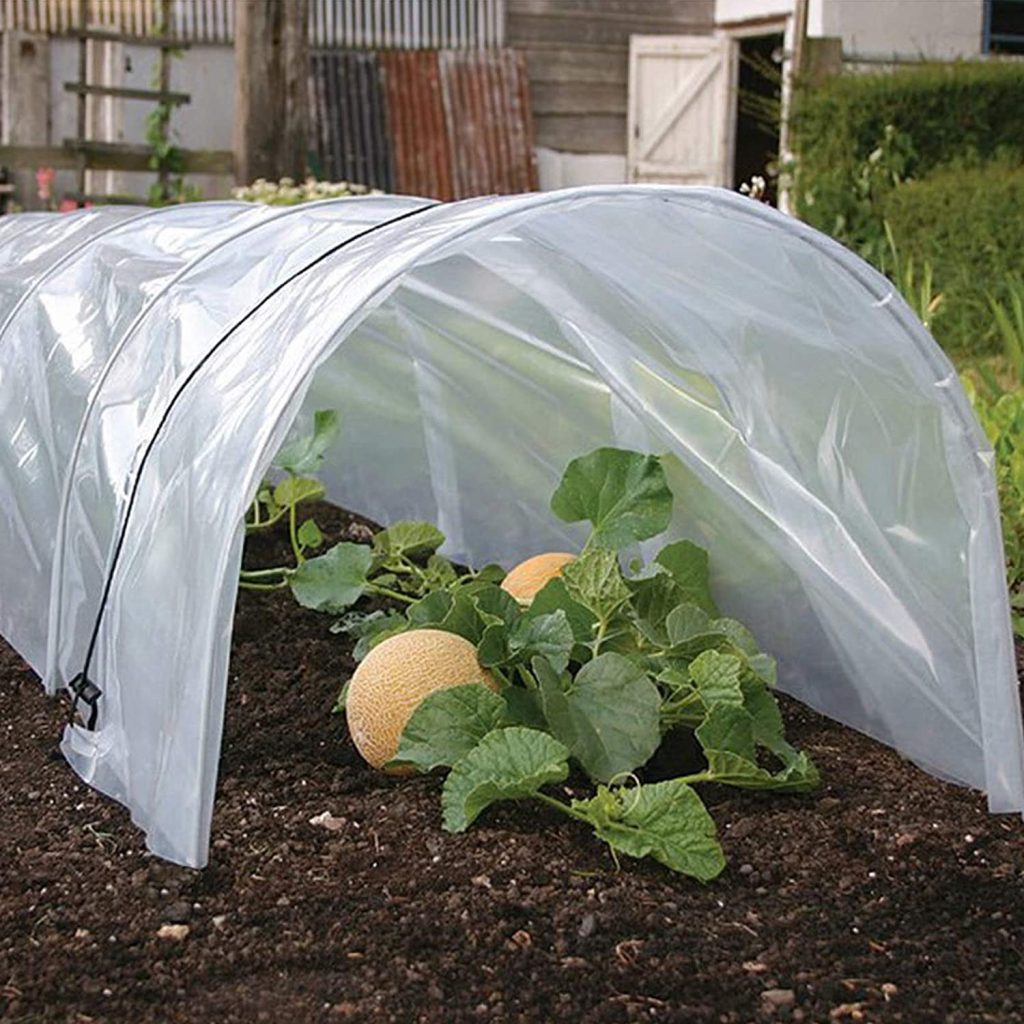
Extend Your Season With Growsun Row Covers
When planting tomatoes out into the garden they should ideally be placed in a warm location that gets at least 6 to 8 hours of sun per approximately 10 to 12 inches apart. In terms of soil conditions, ideally, the plants should be placed in a rich moist, and free-draining soil that has plenty of nutrients. If you’re unsure about the quality of your soil it is advisable to add a bag of compost.
As tomato plants are relatively tall plants they will need to have a support structure to keep them upright. Many people use a single state for this, which I generally find is not tall enough and does not have enough places to tie the plant into. It is far better to use a trellis system of some sort which could include things like panels of temporary fencing or reo mesh as they have many more places to tie the plant into and they are significantly taller.
Indeterminant tomato varieties are known to reach up to 6 to 7 ft tall in the latter part of the season so if you want to keep your tomato plants upright you need a relatively tall support structure.
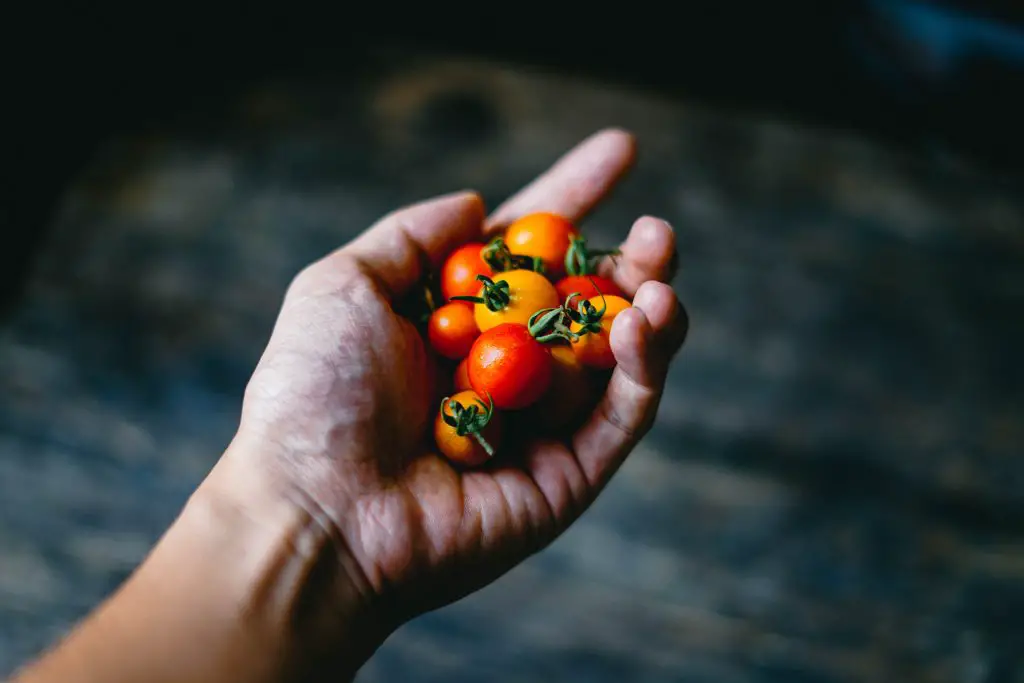
Caring For Tomato Plants
Tomato plants are prolific producers of foliage and stems, to keep them from becoming a tangled mass throughout the season it is important to remove the side shoots by pitching them out regularly. These are the shoots that grow on a 45-degree angle between the main stem and the leaves of the plant. If these side shoots are not removed from the plant they will produce new stems all over the place and will focus on foliage production rather than fruit production.
Generally, most gardeners will keep the plant to a single main stem however research has shown that to maximize the number of fruit on a plant, ideally, it should have two to three main stems.
Irrespective of the number of stems that you choose to keep on your plant you will need to tie them up regularly to prevent the plant from dropping over. Additionally, it is very important to continually water the plant to ensure that it has enough moisture to develop the fruit properly.
The plant will start to produce flowers in early summer in most cases, which is quickly followed by fruit which will start small and green and gradually grow to full size. Ideally, the fruit should be left on the plant to ripen, however, the green tomatoes can be picked and ripened on a window ceil in many cases provided that the fruit is sufficiently well developed.
The need to pick green tomatoes will arise at the end of the season when the tomato plants are finishing up and frosty conditions are approaching. To maximize the number of fruit that will actually ripen it is important to remove the top of the plant approximately 4 weeks prior to the first frost.
The reason for this is because it will force the plant to focus on developing the fruits that it has rather than create new flowers and fruit which will not reach the point where they can be ripened indoors.
Once the first frost arrives the plant will deteriorate quickly so it is, therefore a good idea to pick whatever fruit is of a reasonable size even if they are still green, and put it on a window ceil somewhere in the hope that they will eventually ripen. However, if it does not you can still use the green fruit in cooking for making chutneys and relishes.
I hope you found this article useful and have great success growing your tomatoes at home in your garden, if you have any additional comments or questions please leave them in the section below.
Relevant Articles
How Long Does It Take Tomato Seeds To Germinate? How To Speed It Up
How Far Apart To Plant Cherry Tomatoes
Can You Plant Tomato Seeds Directly In The Ground? (How To Succeed)
Is It Too Late To Plant Tomatoes? And How To Make The Most Of Summer
What is the Difference between a Determinate or Indeterminate Tomato?

